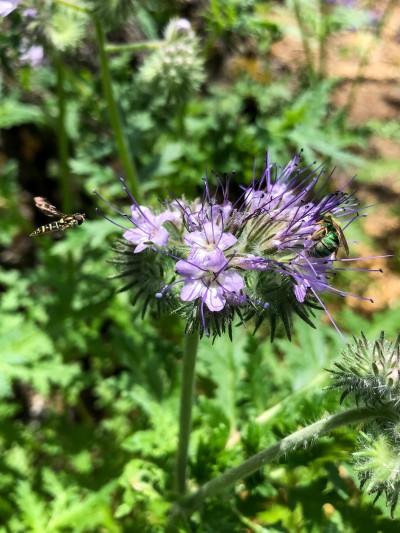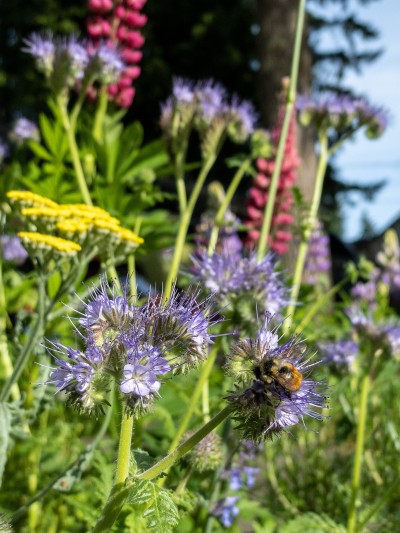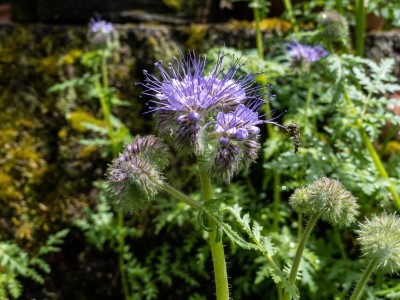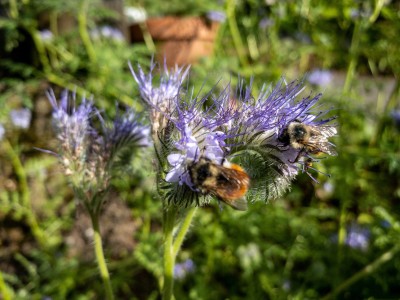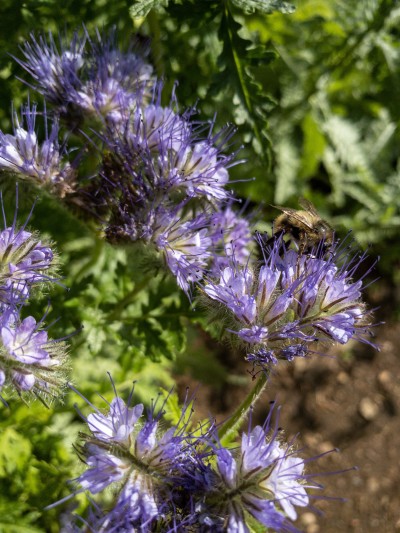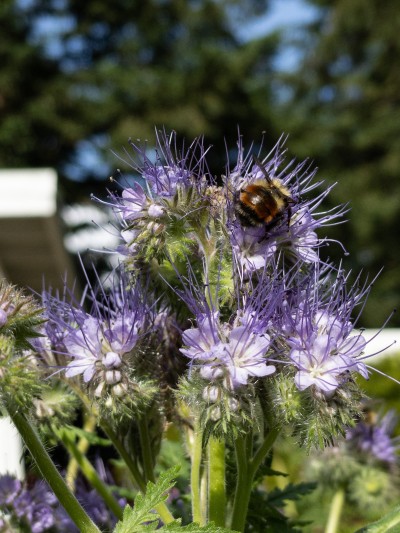
In the front yard, it seeds itself freely among perennials, and acts as a companion to fruit and vegetables.
Overstory
I planted this annual after I received a gift of Seattle Seed packets. I hadn’t known about it but now I see it regularly whenever so-called “pollinator-friendly” flowers are mentioned. The flowers came up quickly in that first spring and they’ve stuck around ever since. If it has a reputation for being weedy, I get it, but when upright it’s a narrow plant and doesn’t cause that much trouble. I say when upright because in the Northwest, after a June rain, the plants collapse. They make a strong effort to correct course immediately, but most of the plant stays on the ground. Not ideal. And reason enough to avoid planting it in the Northwest.
But the appeal of lacy phacelia and its relatives like borage, is that it attracts bees. And there is no question that if phacelia is blooming, bees are checking in regularly. Also hoverflies, which might fool you for bees, except for their truly impressive hovering capabilities. Hoverfly larvae hunt aphids, so you want them around.
Phacelia is not only useful, it’s always interesting to look at. The flowers have a light lavender color with stamens that extend well beyond the flower, from which some small native bees dangle. Starting in May, the flowerheads unfurl with a psychedelic, fractal shape, going from round balls to elongated seed heads within a couple weeks. The lacy part of the name comes from its leaves.
On the blog
- Companion Planting with a Twist (6/18/21)
Details
Origin
Southwestern US and Northern Mexico.
Size
1–3 feet tall. With less than full sun it will grow, but weakly.
Benefits
Without question, bumblebees like the plant. And hoverflies are always close by, waiting their turn.
Family
Boraginaceae
Relatives in the Yard
None listed (yet)
